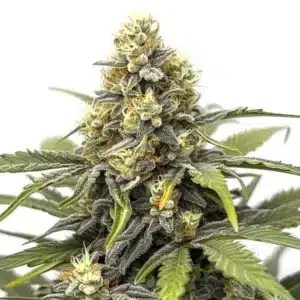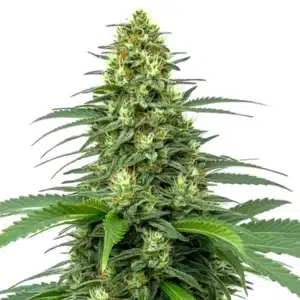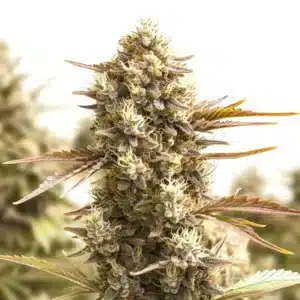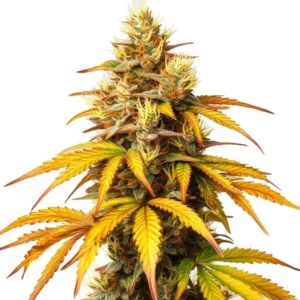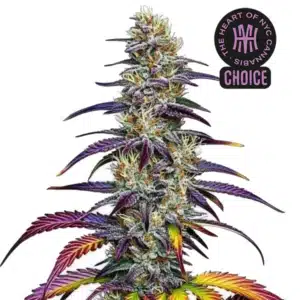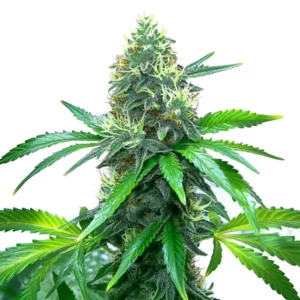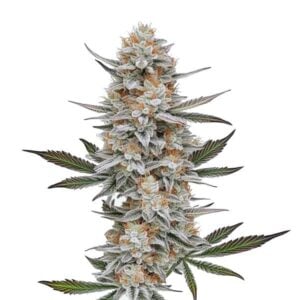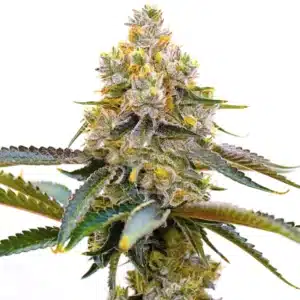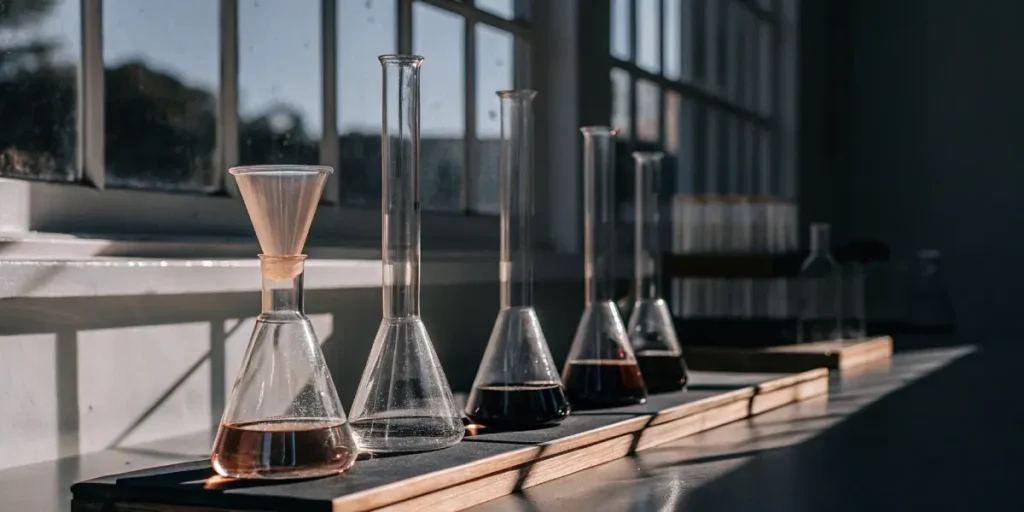
Biocatalysis CBD-to-CBN Process
The biocatalysis CBD-to-CBN process is an exciting development in the cannabis industry, capturing the attention of both first-time cannabis seed buyers and experienced growers. At its core, this process transforms CBD, a popular cannabinoid, into CBN, another compound with its own unique benefits. By using biocatalysts, we can achieve this transformation efficiently and sustainably.
Biocatalysis offers a cleaner, greener alternative to traditional chemical methods. Enzymes, which are natural catalysts, facilitate the CBD to CBN conversion using biocatalysts. This method not only reduces the need for harsh chemicals but also minimizes waste, making it a preferred choice for environmentally conscious growers.
Recommended Strains
Amnesia
|
|
THC | 15% - 20% (Medium) |
|
|
Type | Feminized |
|
|
Yield | Medium |
|
|
Phenotype | 30% Indica / 70% Sativa |
Amnesia Auto
|
|
THC | 10% - 19% (Low) |
|
|
Type | Autoflowering |
|
|
Yield | High |
|
|
Phenotype | 30% Indica / 70% Sativa |
Consider experimenting with strains like Gelato, known for its rich CBD content, which can be a great starting point for the biocatalysis CBD-to-CBN process. This strain, along with others like OG Kush and Blue Dream, provides the raw material needed for a successful conversion.
Benefits of CBD to CBN Conversion Using Biocatalysts
One of the main advantages of the biocatalysis CBD-to-CBN process is its sustainability. Traditional methods often involve harsh chemicals and significant energy consumption. In contrast, biocatalytic methods for CBD to CBN transformation rely on enzymes that work under mild conditions, reducing the environmental footprint.
Additionally, the enzyme-driven CBD to CBN process can be more selective, leading to higher purity in the final product. This precision is crucial for creating high-quality CBN products that meet consumer expectations. For growers, this means being able to market a product that stands out for its purity and effectiveness.
Moreover, sustainable biocatalysis for cannabinoid conversion aligns with current trends towards eco-friendly practices in agriculture. This not only attracts environmentally conscious consumers but also sets a new standard in the cannabis industry for responsible production. By adopting these methods, growers can contribute to a cleaner environment and a healthier market ecosystem.
Another significant benefit is the potential for cost reduction. By minimizing the need for expensive and hazardous chemicals, growers can lower their production costs. This not only makes the biocatalysis CBD-to-CBN process economically viable but also allows for competitive pricing, making high-quality CBN products more accessible to a broader market.
Promos & Deals
Enzymes in the Biocatalytic Methods for CBD to CBN Transformation
Enzymes play a pivotal role in the biocatalysis CBD-to-CBN process. These biological molecules speed up chemical reactions, allowing for efficient conversion without the need for high temperatures or pressures. This is not only energy-saving but also preserves the integrity of the cannabinoids.
For instance, specific enzymes target the CBD molecule, facilitating its transformation into CBN. This precision ensures that the conversion process is not only quick but also yields a product that is free from unwanted byproducts. It’s a win-win for anyone looking to produce quality CBN.
Knowing the enzyme mechanisms involved in CBD to CBN conversion using biocatalysts is crucial for optimizing the process. Researchers are continually exploring new enzymes and their potential applications, which could enhance efficiency and selectivity further. This ongoing innovation is key to maintaining a competitive edge in the rapidly evolving cannabis industry.
Growers interested in optimizing biocatalysis for CBD-to-CBN production should consider the enzyme compatibility with their chosen cannabis strains. Strains like Gelato provide a robust starting point, ensuring that the biocatalytic methods for CBD to CBN transformation are as smooth as possible. Experimenting with different enzymes can lead to breakthroughs in conversion rates and product quality.

Practical Applications of the Biocatalysis CBD-to-CBN Process
In real-world applications, the biocatalysis CBD-to-CBN process has shown significant promise. For first-time cannabis seed buyers, this process offers a way to explore the benefits of CBN without diving into complex chemical processes. Simply choose a strain with a high CBD content, like OG Kush, and let the biocatalysts do the work.
Experienced growers can leverage this process to diversify their product offerings. By converting excess CBD into CBN, they can create a wider range of products, catering to a broader audience. This versatility is particularly valuable in a competitive market where differentiation is key.
The biocatalysis CBD-to-CBN process also opens up opportunities for research and development. Companies can invest in creating proprietary enzyme blends or optimizing existing ones to improve conversion efficiency and product quality. This can lead to new patents and intellectual property, providing additional revenue streams and enhancing brand value.
Furthermore, the ease of implementation makes it accessible to various scales of production, from small-scale artisanal growers to large commercial operations. This scalability ensures that the benefits of the enzyme-driven CBD to CBN process can be realized across the industry, promoting widespread adoption and innovation.
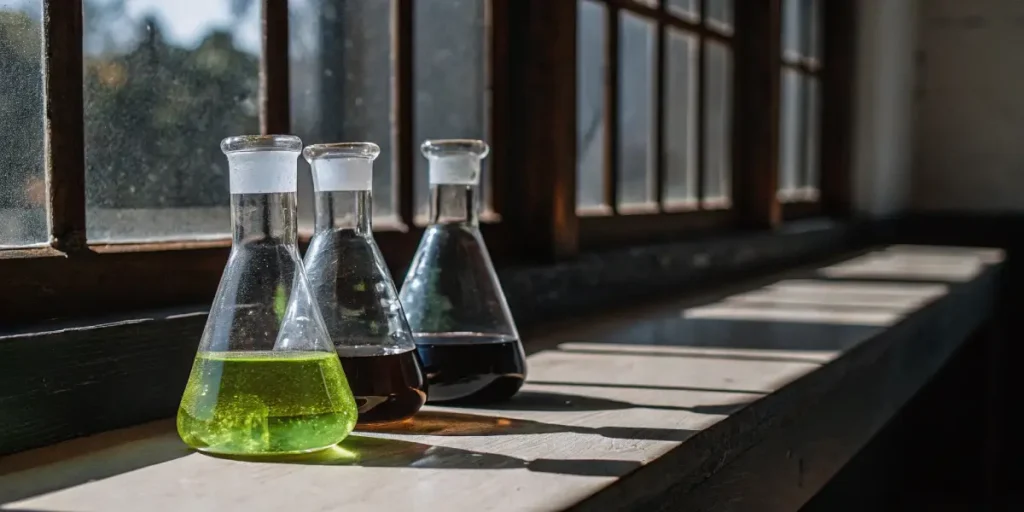
FAQs
What is the main advantage of using biocatalysis for CBD-to-CBN conversion?
The primary advantage of using biocatalysis for CBD-to-CBN conversion lies in its sustainability and efficiency. Unlike traditional chemical methods, biocatalysis employs natural enzymes, reducing the need for harsh chemicals and excessive energy consumption. This not only minimizes environmental impact but also results in a cleaner, higher-purity product.
Moreover, the enzyme-driven process ensures a more selective conversion, which translates into better quality control and consistency in the final CBN product. This is crucial for growers looking to maintain a high standard and meet consumer demands for purity and effectiveness.
Additionally, the biocatalysis CBD-to-CBN process aligns with the industry’s move towards more sustainable practices. By reducing reliance on non-renewable resources and decreasing chemical waste, this method supports a more responsible and eco-friendly cannabis production model. Consumers are increasingly aware of these benefits, often choosing products that reflect their values.
Finally, the adaptability of the biocatalytic methods for CBD to CBN transformation means they can be customized to suit different production needs. This flexibility allows growers to tailor the process to specific strains and desired product outcomes, enhancing both the efficiency and appeal of their offerings.
How do enzymes facilitate the CBD to CBN conversion?
Enzymes are biological catalysts that speed up chemical reactions. In the context of CBD to CBN conversion, specific enzymes target the CBD molecule, facilitating its transformation into CBN. This process occurs under mild conditions, preserving the cannabinoid’s integrity and ensuring efficient conversion.
By using enzymes, the conversion process becomes more precise, leading to fewer unwanted byproducts. This precision is especially beneficial for producing high-quality CBN, which is essential for both medicinal and recreational cannabis products.
The choice of enzymes in the enzyme-driven CBD to CBN process can greatly influence the outcome of the conversion. By selecting enzymes that are highly specific to CBD, growers can ensure that the transformation is both rapid and complete, resulting in a purer CBN product with minimal impurities.
Research into enzyme optimization continues to reveal new possibilities for enhancing the biocatalysis CBD-to-CBN process. By engineering enzymes to be more stable and active under a wider range of conditions, scientists aim to make the conversion process even more robust and reliable, opening up new avenues for industrial application.
Can all cannabis strains undergo the biocatalysis CBD-to-CBN process?
Not all cannabis strains are equally suited for the biocatalysis CBD-to-CBN process. Strains with higher CBD content, such as Gelato, are more suitable candidates for this conversion. These strains provide a rich source of CBD, which is necessary for a successful transformation into CBN.
Growers should carefully select strains based on their CBD content and compatibility with the enzymes used in the biocatalytic process. This ensures optimal results and maximizes the efficiency of the conversion process.
When selecting strains for the biocatalysis CBD-to-CBN process, it is also important to consider the overall cannabinoid profile. Strains that offer a balanced composition may yield a more favorable product, enhancing both the potency and therapeutic potential of the final CBN.
Additionally, experimenting with different strains can lead to unique and distinctive CBN products, offering growers a chance to differentiate themselves in the market. By knowing the interaction between strain characteristics and the biocatalytic methods for CBD to CBN transformation, growers can fine-tune their processes for optimal results.
What are the environmental benefits of the biocatalysis CBD-to-CBN process?
The environmental benefits of the biocatalysis CBD-to-CBN process are significant. By using enzymes instead of chemical catalysts, the process reduces the need for toxic chemicals and high energy input. This not only lowers the carbon footprint but also minimizes waste and pollution.
For environmentally conscious growers and consumers, this sustainable approach aligns with the growing demand for green and eco-friendly practices in the cannabis industry. It offers a viable alternative to traditional methods, promoting a cleaner and more responsible production process.
Sustainable biocatalysis for cannabinoid conversion is increasingly important as the cannabis industry expands. By adopting these methods, growers can significantly reduce their environmental impact, contributing to global efforts to combat climate change and resource depletion.
Moreover, the reduction in chemical waste and energy use can facilitate compliance with environmental regulations, reducing the risk of fines and enhancing a company’s reputation. This proactive approach to sustainability can also attract investors and partners who prioritize eco-friendly business practices.
How can new growers start with the CBD-to-CBN conversion process?
New growers interested in the CBD-to-CBN conversion process should start by selecting the right cannabis strain. High-CBD strains like OG Kush or Blue Dream are excellent choices. These strains provide the necessary CBD content to initiate the conversion process.
Once the right strain is chosen, growers can explore enzyme options and experiment with the biocatalytic methods for CBD to CBN transformation. This hands-on approach allows growers to gain practical experience and refine their techniques for optimal results.
Starting with a small-scale trial can help new growers understand the nuances of the biocatalysis CBD-to-CBN process. By focusing on a controlled environment, growers can closely monitor the conversion and make adjustments to improve efficiency and yield.
As growers become more comfortable with the process, they can gradually scale up production, leveraging their growing expertise to optimize biocatalysis for CBD-to-CBN production. This gradual approach allows for continuous learning and adaptation, ultimately leading to a more successful and sustainable operation.


